CP Intertrade company Ltd. and companies in the international trade business group intend to develop products and push forward programs to promote health and well-being of consumers, especially products that are the main products in accordance with the guidelines for the health of Thailand and international by using the potential, Company resources and stakeholders to prevent and solve health problems of All groups of people. To support the Sustainable Development Goals, Goals 2 and 3 focus on hunger and promoting health and well-being.
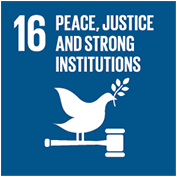
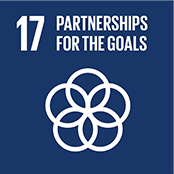


-
Number of business lines.2777100%
-
Number of companies.2777100%
- Determination of stakeholder groups according to key trading partners, which has 14 groups
- Determination of stakeholder groups by CP group, which has 10 groups.
- Determination of stakeholder groups according to the CSR standard system, which has 8 groups.
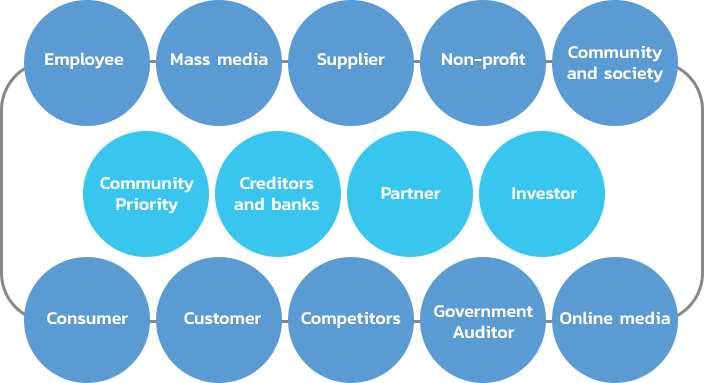
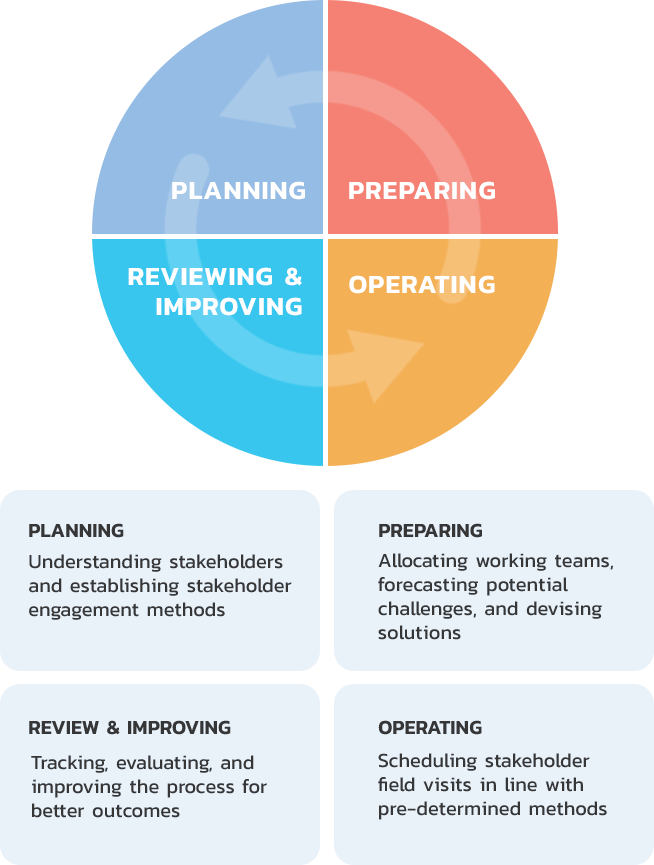
This allows us to understand common key issues that stakeholders have the same opinion on. and has been planned to respond to such issues as well as pushing for continuous improvement of operations and to meet the expectations of interested stakeholders and different expectations, the business group therefore creates a channel for stakeholder participation. through a communication mechanism that facilitates the relationship exchange views. The communication frequency of each group will vary according to plans and needs. as shown in the table:
| Stakeholder Group | Method of Engagement | Issues of Interest | Materiality Issues | Response | Benefits Received by Stakeholders |
|---|---|---|---|---|---|
| Employee |
|
|
|
|
|
| Community and society |
|
|
|
|
|
| Consumer and Customer |
|
|
|
|
|
| Partner |
|
|
|
|
|
| Shareholder and Investor |
|
|
|
|
|
| Mass Media and Online media |
|
|
|
|
|
| Government Auditor |
|
|
|
|
|
| Supplier |
|
|
|
|
|
| Competitors |
|
|
|
|
|
| Non-profit organization |
|
|
|
|
|
| Creditors and banks |
|
|
|
|
|
To ensure that the operation of community support is standardized has established guidelines for community operations by merging dialogue with the community to understand and reduce various concerns of communities that are directly and indirectly affected by business operations, consisting of 5 steps
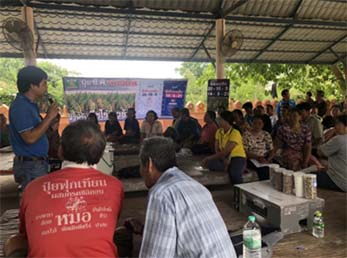
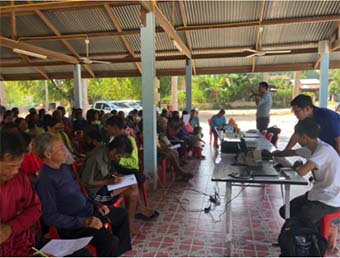
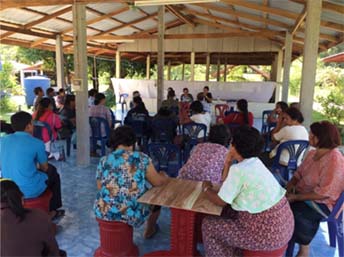
C.P. Intertrade Co., Ltd. International Trading Business Group operates in the water transportation business of Ayutthaya Port and ICD Company Limited. Therefore, the Company has conducted an Environmental Impact Assessment (EIA) by conducting a questionnaire survey on environmental impacts on communities within a radius of 500 meters and conducting public hearings twice a year. Dividing the stakeholders into 7 groups according to the guidelines for the participation of people in preparing the Environmental Impact Assessment Report as follows:
-
Group 1People who are affected both positively and negatively
-
Group 2Persons responsible for preparing the Environmental Impact Assessment Report
-
Group 3Persons responsible for considering environmental impact assessment reports
-
Group 4Government agencies at various levels
-
Group 5Environmental Protection NGOs
-
Group 6Mass Media
-
Group 7People who are interested
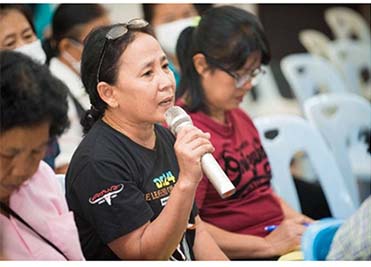
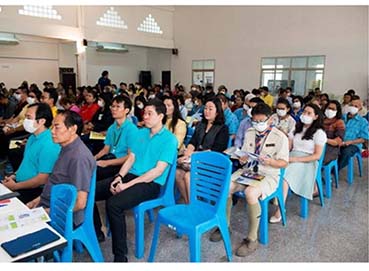
Planting trees to increase green areas around the establishment and planting perennial trees opposite the cargo wharf project for a distance of 1,250 meters from the Golden Temple area to the Kaew Temple. The trees planted are:
- Bamboo 300 trees (cling to the top of the soil prevent water embankment subsidence)
- Pine 300 trees (trapping dust from loading and unloading in front of the port)
- Canvas or plastic cloth must be stretched between the barge and the berth. to prevent products from falling into the Pa Sak River
- Maritime activities while loading a full ship Must navigate carefully to prevent accidents on the boat. Especially the fishermen who fished along the shipping routes and the diffusion of bottom sediment that affects fish and aquatic life.
- In the case of the dry season, when the water level in the river decreases, use a ship to transport goods with a depth of water. correlation with the water level in the Pa Sak River. to prevent the boat from getting stuck in the water and caused the spread of sediment in the water
- In case of damage to the banks of the Pa Sak River that the project’s cargo ships use to travel If the damage is found caused by the cargo ship of the project to be corrected / repaired to be in good condition as soon as possible.
CP Intertrade company Ltd. and companies in the international trade business group intend to develop products and push forward programs to promote health and well-being of consumers, especially products that are the main products in accordance with the guidelines for the health of Thailand and international by using the potential, Company resources and stakeholders to prevent and solve health problems of All groups of people. To support the Sustainable Development Goals, Goals 2 and 3 focus on hunger and promoting health and well-being.




-
Number of business lines.2777100%
-
Number of companies.2777100%
- Determination of stakeholder groups according to key trading partners, which has 14 groups
- Determination of stakeholder groups by CP group, which has 10 groups.
- Determination of stakeholder groups according to the CSR standard system, which has 8 groups.


This allows us to understand common key issues that stakeholders have the same opinion on. and has been planned to respond to such issues as well as pushing for continuous improvement of operations and to meet the expectations of interested stakeholders and different expectations, the business group therefore creates a channel for stakeholder participation. through a communication mechanism that facilitates the relationship exchange views. The communication frequency of each group will vary according to plans and needs. as shown in the table:
| Stakeholder Group | Method of Engagement | Issues of Interest | Materiality Issues | Response | Benefits Received by Stakeholders |
|---|---|---|---|---|---|
| Employee |
|
|
|
|
|
| Community and society |
|
|
|
|
|
| Consumer and Customer |
|
|
|
|
|
| Partner |
|
|
|
|
|
| Shareholder and Investor |
|
|
|
|
|
| Mass Media and Online media |
|
|
|
|
|
| Government Auditor |
|
|
|
|
|
| Supplier |
|
|
|
|
|
| Competitors |
|
|
|
|
|
| Non-profit organization |
|
|
|
|
|
| Creditors and banks |
|
|
|
|
|
To ensure that the operation of community support is standardized has established guidelines for community operations by merging dialogue with the community to understand and reduce various concerns of communities that are directly and indirectly affected by business operations, consisting of 5 steps



C.P. Intertrade Co., Ltd. International Trading Business Group operates in the water transportation business of Ayutthaya Port and ICD Company Limited. Therefore, the Company has conducted an Environmental Impact Assessment (EIA) by conducting a questionnaire survey on environmental impacts on communities within a radius of 500 meters and conducting public hearings twice a year. Dividing the stakeholders into 7 groups according to the guidelines for the participation of people in preparing the Environmental Impact Assessment Report as follows:
-
Group 1People who are affected both positively and negatively
-
Group 2Persons responsible for preparing the Environmental Impact Assessment Report
-
Group 3Persons responsible for considering environmental impact assessment reports
-
Group 4Government agencies at various levels
-
Group 5Environmental Protection NGOs
-
Group 6Mass Media
-
Group 7People who are interested


Planting trees to increase green areas around the establishment and planting perennial trees opposite the cargo wharf project for a distance of 1,250 meters from the Golden Temple area to the Kaew Temple. The trees planted are:
- Bamboo 300 trees (cling to the top of the soil prevent water embankment subsidence)
- Pine 300 trees (trapping dust from loading and unloading in front of the port)
- Canvas or plastic cloth must be stretched between the barge and the berth. to prevent products from falling into the Pa Sak River
- Maritime activities while loading a full ship Must navigate carefully to prevent accidents on the boat. Especially the fishermen who fished along the shipping routes and the diffusion of bottom sediment that affects fish and aquatic life.
- In the case of the dry season, when the water level in the river decreases, use a ship to transport goods with a depth of water. correlation with the water level in the Pa Sak River. to prevent the boat from getting stuck in the water and caused the spread of sediment in the water
- In case of damage to the banks of the Pa Sak River that the project’s cargo ships use to travel If the damage is found caused by the cargo ship of the project to be corrected / repaired to be in good condition as soon as possible.
CP Intertrade company Ltd. and companies in the international trade business group intend to develop products and push forward programs to promote health and well-being of consumers, especially products that are the main products in accordance with the guidelines for the health of Thailand and international by using the potential, Company resources and stakeholders to prevent and solve health problems of All groups of people. To support the Sustainable Development Goals, Goals 2 and 3 focus on hunger and promoting health and well-being.




-
Number of business lines.2777100%
-
Number of companies.2777100%
- Determination of stakeholder groups according to key trading partners, which has 14 groups
- Determination of stakeholder groups by CP group, which has 10 groups.
- Determination of stakeholder groups according to the CSR standard system, which has 8 groups.


This allows us to understand common key issues that stakeholders have the same opinion on. and has been planned to respond to such issues as well as pushing for continuous improvement of operations and to meet the expectations of interested stakeholders and different expectations, the business group therefore creates a channel for stakeholder participation. through a communication mechanism that facilitates the relationship exchange views. The communication frequency of each group will vary according to plans and needs. as shown in the table:
| Stakeholder Group | Method of Engagement | Issues of Interest | Materiality Issues | Response | Benefits Received by Stakeholders |
|---|---|---|---|---|---|
| Employee |
|
|
|
|
|
| Community and society |
|
|
|
|
|
| Consumer and Customer |
|
|
|
|
|
| Partner |
|
|
|
|
|
| Shareholder and Investor |
|
|
|
|
|
| Mass Media and Online media |
|
|
|
|
|
| Government Auditor |
|
|
|
|
|
| Supplier |
|
|
|
|
|
| Competitors |
|
|
|
|
|
| Non-profit organization |
|
|
|
|
|
| Creditors and banks |
|
|
|
|
|
To ensure that the operation of community support is standardized has established guidelines for community operations by merging dialogue with the community to understand and reduce various concerns of communities that are directly and indirectly affected by business operations, consisting of 5 steps



C.P. Intertrade Co., Ltd. International Trading Business Group operates in the water transportation business of Ayutthaya Port and ICD Company Limited. Therefore, the Company has conducted an Environmental Impact Assessment (EIA) by conducting a questionnaire survey on environmental impacts on communities within a radius of 500 meters and conducting public hearings twice a year. Dividing the stakeholders into 7 groups according to the guidelines for the participation of people in preparing the Environmental Impact Assessment Report as follows:
-
Group 1People who are affected both positively and negatively
-
Group 2Persons responsible for preparing the Environmental Impact Assessment Report
-
Group 3Persons responsible for considering environmental impact assessment reports
-
Group 4Government agencies at various levels
-
Group 5Environmental Protection NGOs
-
Group 6Mass Media
-
Group 7People who are interested


Planting trees to increase green areas around the establishment and planting perennial trees opposite the cargo wharf project for a distance of 1,250 meters from the Golden Temple area to the Kaew Temple. The trees planted are:
- Bamboo 300 trees (cling to the top of the soil prevent water embankment subsidence)
- Pine 300 trees (trapping dust from loading and unloading in front of the port)
- Canvas or plastic cloth must be stretched between the barge and the berth. to prevent products from falling into the Pa Sak River
- Maritime activities while loading a full ship Must navigate carefully to prevent accidents on the boat. Especially the fishermen who fished along the shipping routes and the diffusion of bottom sediment that affects fish and aquatic life.
- In the case of the dry season, when the water level in the river decreases, use a ship to transport goods with a depth of water. correlation with the water level in the Pa Sak River. to prevent the boat from getting stuck in the water and caused the spread of sediment in the water
- In case of damage to the banks of the Pa Sak River that the project’s cargo ships use to travel If the damage is found caused by the cargo ship of the project to be corrected / repaired to be in good condition as soon as possible.









